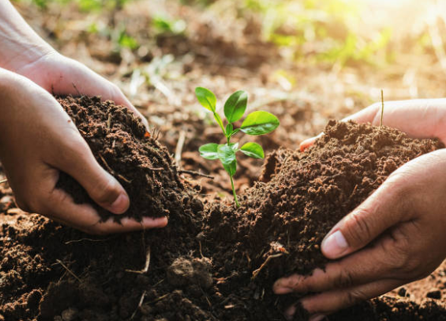Ethiopia’s Green Legacy Initiative
In order to create a sustainable and resilient economy, Ethiopia adopted the Climate Resilient Green Economy (CRGE) strategy in 2011. Within those regulatory frameworks, Ethiopia has been carrying out a variety of projects over the years in order to create a sustainable and resilient economy.
The Green Legacy Initiative (GLI) is one of the initiatives which was introduced in June 2019 with the goal of creating a green and climate-resilient Ethiopia. The goal was to plant 20 billion seedlings over the course of four years. According to the Ethiopian government by rallying more than 20 million residents nationwide, Ethiopia has succeeded in planting 25 billion seedlings by the end of the fourth year.
The Initiative's aim to tackle numerous goals that can be seen as a very creative feature overall. This initiative has positive effects on a variety of interconnected goals, including environmental protection, the restoration of overused and damaged natural resources, such as surface soil and water, and stopping desertification.

Ethiopia's long-term dedication to a multifaceted response to the effects of climate change and environmental degradation is demonstrated by the initiative, which includes agroforestry, the development of the forest sector, the greening and renewal of urban areas, and integrated water and soil resource management. The initiative is expected to have aided Ethiopia's attempts to uphold its obligations under international agreements including the Paris Climate Change Agreement, the 2030 Agenda for Sustainable Development, and Agenda 2063. Despite the scepticism, the Ethiopian government has stated that The Green Legacy Initiative which aims at curbing the effects of climate change and deforestation in Ethiopia mobilized more than 25 million people to plant 25 billion tree seedlings.
The Ethiopian government's Green Legacy Initiative, which naturally touches on a number of the 2030 Agenda goals, also aims to support with food security of the country. The government reported that more than 500 million seedlings, including papayas, mangoes, avocados, and apples, which have high value in the domestic and international market were planted in 2022 alone. This directly contributes to the current drive toward achieving food self-sufficiency by supporting sustainable agriculture as envisioned in Sustainable Development Goal 2. This Initiative also aims to work on Goal 13 of the SDGs to support Ethiopia's efforts to lessen its vulnerability with regard to frequent floods, droughts, and locust infestations, which are a few examples of how extreme climate phenomena appear in the country. The average annual temperature in Ethiopia is thought to have increased by 0.37 degrees Celsius on average over the previous four decades.

This year, the campaign began after the PM challenged each individual to better their previous footprint in the bid to plant 500 million seedlings. The government communicated that people from all walks of life including members of the diplomatic community left their green legacy footprint where more than 566 million saplings had been planted nationwide in one day. According to the government, the one day campaign ended with 66 million more saplings than the target planned which put the success rate at 113%. The total figure eclipsed the previous tree-planting record – set at the start of the Green Legacy Initiative (GLI) four years ago – by more than 200 million saplings according to the government data.
Ethiopia's Prime Minister Abiy Ahmed praised everyone who took part in the campaign, describing this year's achievement as historic and congratulated all who participated in the campaign emphasizing the country accomplished a task that gives a great lesson to the whole world.
